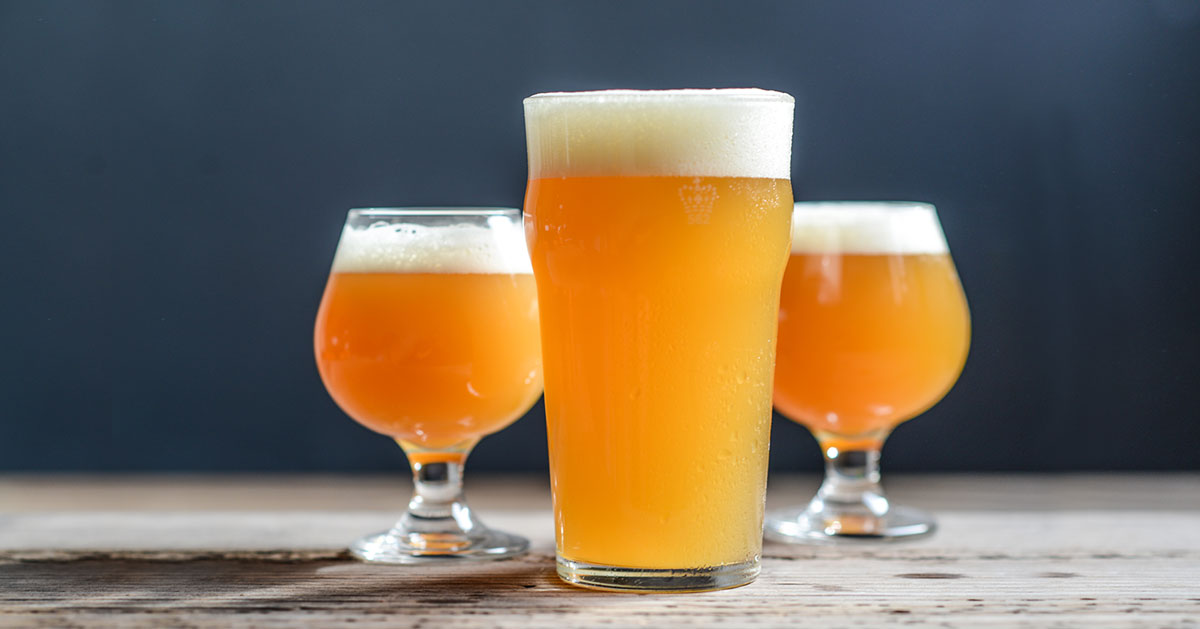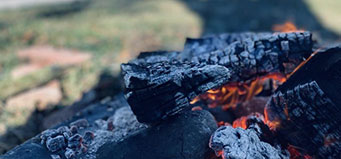T’Wit’sted Witbier
 Hello brewing friends, and welcome to a first in a new series of monthly recipe posts I lovingly call “Brew Along with Us!” The main idea behind this is to formulate and publish a new recipe each month that gives us the chance to explore new/different beer styles, ingredients, brewing techniques, commercial clone brews, and basically all things brewing related. We hope to have these beers ready for our monthly Friday Night Club, which meets at Great Fermentations on the second Friday of every month from 5-7 p.m.
Hello brewing friends, and welcome to a first in a new series of monthly recipe posts I lovingly call “Brew Along with Us!” The main idea behind this is to formulate and publish a new recipe each month that gives us the chance to explore new/different beer styles, ingredients, brewing techniques, commercial clone brews, and basically all things brewing related. We hope to have these beers ready for our monthly Friday Night Club, which meets at Great Fermentations on the second Friday of every month from 5-7 p.m.
This first recipe comes from an idea I’ve had ever since buying a copy of Jamil Zainasheff and John Palmer’s book, “Brewing Classic Styles.” One of the styles found in this great book is a classic enjoyed by many, especially in the warming temperatures of spring and the heat of summer: Witbier. In my witbier recipe, we’ll be utilizing some non-traditional spices and zests to make a refreshing wheat beer for the late spring/early summer.
Witbier History
Witbier has some wonderful history behind it, and Randy Mosher has done an awesome job of encapsulating this illustrious history in a few paragraphs from his book, “Tasting Beer.” Originating around the eleventh century in Europe, this very pale and cloudy beer (“wit” means ”white”) had survived the centuries until it nearly went extinct in the middle of the last century. However, an enterprising brewer named Pierre Celis revived the style, which he was well familiar with, producing the beer that we know today as Hoegaarden. Other commercial examples of Wits have become popular, such as Blue Moon, Alagash White, Shock Top Belgian White, and Bell’s Winter White Ale.
Couple Notes on the Ingredients
Malts: Pilsner malt is usually used nowadays as the base malt for a more authentic flavor, however, I choose to use standard American 2-row for a base. If you are going to use Pilsner malt, do as Zainasheff and Palmer recommend: extend your mash times for full conversion and extend your boil to 90 minutes to eliminate precursors to DMS (Dimethyl Sulfide). If you are an extract brewer, you won’t have to worry about this. I’m including an extract version of the recipe too. As far as wheat goes: unmalted raw wheat can certainly be used, but it is a harder grain to work with, requiring more intensive mash techniques such as decoction mashing. A better choice for our recipe is flaked soft wheat, which will lend proteins for body, head retention and a signature cloudiness, as well as fermentables that are more easily accessible
Spices: Traditionally, coriander is used for spice, orange peel for citrus, and chamomile for herbal notes. As you’ll see in my recipe though, I’ve changed things up a bit for this one!
Here is the recipe…brew along with us! Let us know if you have any recommendations for updates to the recipe and/or how your version turns out. We’d love to hear from you!
T’Wit’sted Witbier All-Grain recipe (for final volume of 5.5 gallons):
Specs
Estimated O.G. = 1.048
Estimated F.G. = 1.012
Estimated ABV = 4.7%
Estimated Bitterness = 16 IBUs
Grain Bill
5 lbs. American 2-Row Brewer’s Malt
4 lbs. Flaked Wheat
1 lb. Flaked Oats
Hops
1.5 oz. Saaz (3.2%AA) added at the beginning of the 60 minute boil
Spices*
Spices and peel, added in a hop bag in the final 5 minutes of the boil:
0.4 oz. Coriander, lightly crushed
0.1 oz. Mixed peppercorns, lightly crushed (mix of black, pink, white and green)
0.4 oz. bitter orange peel, dried
0.4 oz. lemon peel, dried
0.4 oz. lime peel, dried
0.25 oz. lemongrass, dried.
Yeast
Wyeast 3944 Belgian Witbier is my strain of choice, as it is purported to be from the Hoegaarden brewery and is just an overall great strain for the style.
Brewing Process
- Mash at 154F for 60 minutes, proceed with boil as normal.
- Chill to 68F & pitch yeast.
- Ferment between 68F and 72F for 2 weeks.
- A secondary fermentation is not necessary, as this beer is supposed to be cloudy and served relatively young.
Extract Version: Replace all the American 2-Row malt with 3 lbs. light dry malt extract and replace 3 lbs. of the flaked wheat with 2 lbs. of wheat dry malt extract. Steep the remaining 1 lb. of flaked wheat and 1 lb. flaked oats at 150-155F for 30 minutes. Remove flaked grains, turn off flame and mix in extract. Bring to a boil and boil as normal, following hop and spice schedule. Follow chilling and fermenting schedule as above. The extract version of this recipe will be darker than the all-grain version. That’s just the nature of using extracts.
* While Great Fermentations sells dried bitter orange and lemon peel, dried lime peel or zest may be hard to come by. We are planning on getting some in, so keep an eye out for it on our shelves soon! In the meantime, you can wash fresh limes using a 3 parts water to 1 part vinegar solution and allowing to soak for 10 minutes to remove wax and pesticides, then dry the peel yourself. Try to avoid including the white pith, as it can be bitter and astringent. You may also choose to use commercial fruit and vegetable washes, such as those that are peroxyacetic-based.
Not Feeling That Adventurous but still want to brew a Witbier? Great Fermentations has a wonderful Wit recipe called Witless in Indianapolis, available in both extract and all-grain!
Update July 1st, 2014:
We were able to brew two batches (extract) here at Great Fermentations, but neither of them had the small peppercorn addition. I really would like to know what flavor note that would add to the beer, so if anyone happened to brew the recipe with the mixed peppercorns, chime in and tell us how that presented itself in the final beer.
Other than that, the final beer was quite refreshing and flavorful! I’m not sure how much the lime came out, or put more precisely, where the lemongrass ended and the lime began. There was a solid, delicious citrus flavor that meshed well with the lightly-colored, slightly cloudy body, for sure. The yeast came through with its signature spice and tartness that balanced well with the wheat and oats in the beer. The hops added a balancing bitterness, but were eclipsed by yeast esters and phenolics as well as the fruit peel and lemongrass.
A few people commented that it was pretty good, but missing something. I wondered if the mixed peppercorns would have helped to round out the flavor profile and make it more complete. Overall though, I was very pleased with this beer. It came out as a good example of a classic Witbier, with the lemongrass adding a different dimension to the citrus character. Again, I would have liked to have known what the mixed peppercorns would have added, and would be interested in trying the all-grain version of the beer.
Did you brew the T’wit’sted Witbier? Did you change up the hops, spices, grain, yeast, etc? Tell us what you did or how yours came out, we’d like to know!



This sounds amazing! Perfect for summer! I think the lemongrass and lime peel are great idea’s. Can’t wait to try this one.
im gonna brew it.
I have to admit I like the way this recipe is put together so I may have to brew this before May. Thinking I may dry hop about half an ounce of Amarillo or possibly the Citra to bring out more of the lemon notes with out over doing the IBU’s.
What did you end up adding for dry hops and how did it turn out? I was thinking of dry hopping with either Amarillo, Sorachi, or Citra,